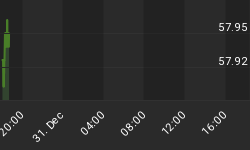
The moment I re-read the paragraph - subsequent to publishing, I knew it was misplaced. "You will regret the ambiguity and nonchalance", I thought to myself. And here I am a mere week later, fear mongering...
Cognitive bias you say? Certainly - but it is glazed in reality.
From last Wednesday's notes:
Along those lines, the macro-backdrop - which arguably has never been as crucial to get right as it is today, is the ever changing scene in which you need to juxtapose the immediate settings. It is also the well that many economists and pundits will drink from and pour tall to keep you up at night. You might hear something along these lines, which holds certain truths glazed in hyperbole:
"You might not realize it at the time - but that snowball that started in a small municipality in Spain could eventually show up as an avalanche on your doorstep."
Maybe it was my subconscious leading me back to the error of my phrasing, either way - Spain is another canary of concern and I do believe before the summer is over we will have a material issue again from across the Atlantic. And while I also find the humor and irony in measures taken by the ECB yesterday towards Portugal (and eventually the rest of the lot) - I am not surprised. For anyone that traded through the financial crisis knows it is part of the game.
They read the charts and know what's at stake in the immediate sense just the same. It's revealed on the very shortest time frames and reverberates up the scale.
The long term chart below is of Spain's equity market ETF - EWP. I tend to use line charts for conveying strategy points and candles for tactics. The chart was created intraday yesterday and unfortunately I don't have the same software packages with me today to update it. There's still quite a ways to go in July, but as of this morning it has broken back through the symmetrical triangle it has traded in for the last four years - indicating a very preliminary false breakout.
Symmetrical triangles are a very common formation utilized by forex and equity traders in intraday and daily time frames. They are typically a continuation pattern. However, the longer the scale - the more likely it will mark a trend reversal.
False breakouts are typically followed by a thrust through the triangle in the opposite direction of the initial breakout.
The very quick takeaway (nature calls with the family) is the evidence continues to pile up that the dollar will benefit disproportionately from the relative misfortunes in Europe.
In essence - it looks to be coming down with a very bad case of schadenfreude.

















